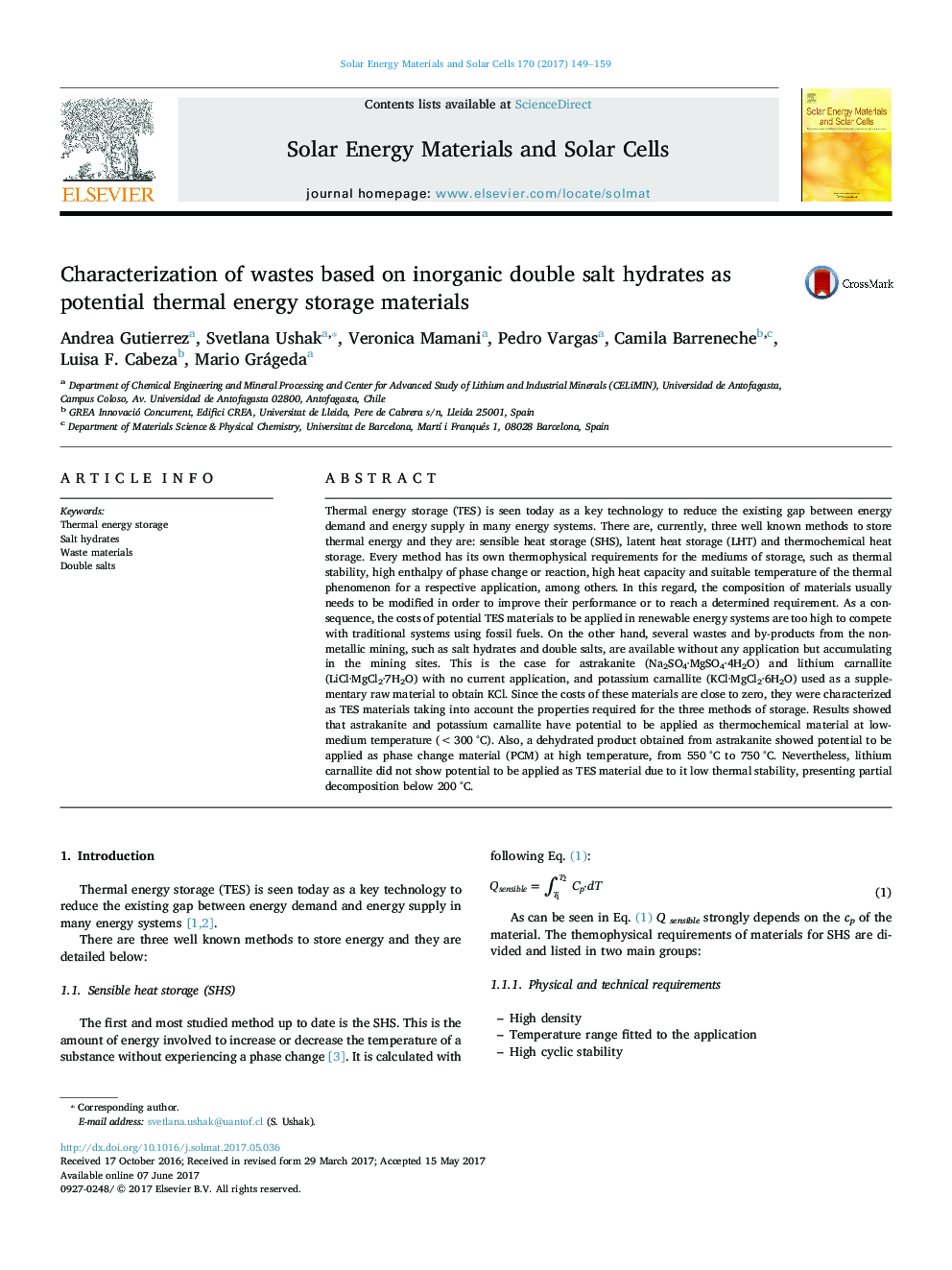| کد مقاله | کد نشریه | سال انتشار | مقاله انگلیسی | نسخه تمام متن |
|---|---|---|---|---|
| 6456827 | 1420653 | 2017 | 11 صفحه PDF | دانلود رایگان |
- Thermophysical study of three double salt hydrates as TES materials was done.
- Astrakanite has potential to be applied as TCM at low-medium temperature.
- The dehydrated binary mixture based on sulfates is promising as PCM at high T.
- Potassium carnallite has potential to be applied as TCM at low-medium temperature.
- Lithium carnallite has not potential as TES material under the conditions of this study.
Thermal energy storage (TES) is seen today as a key technology to reduce the existing gap between energy demand and energy supply in many energy systems. There are, currently, three well known methods to store thermal energy and they are: sensible heat storage (SHS), latent heat storage (LHT) and thermochemical heat storage. Every method has its own thermophysical requirements for the mediums of storage, such as thermal stability, high enthalpy of phase change or reaction, high heat capacity and suitable temperature of the thermal phenomenon for a respective application, among others. In this regard, the composition of materials usually needs to be modified in order to improve their performance or to reach a determined requirement. As a consequence, the costs of potential TES materials to be applied in renewable energy systems are too high to compete with traditional systems using fossil fuels. On the other hand, several wastes and by-products from the non-metallic mining, such as salt hydrates and double salts, are available without any application but accumulating in the mining sites. This is the case for astrakanite (Na2SO4·MgSO4·4H2O) and lithium carnallite (LiCl·MgCl2·7H2O) with no current application, and potassium carnallite (KCl·MgCl2·6H2O) used as a supplementary raw material to obtain KCl. Since the costs of these materials are close to zero, they were characterized as TES materials taking into account the properties required for the three methods of storage. Results showed that astrakanite and potassium carnallite have potential to be applied as thermochemical material at low-medium temperature (<300 °C). Also, a dehydrated product obtained from astrakanite showed potential to be applied as phase change material (PCM) at high temperature, from 550 °C to 750 °C. Nevertheless, lithium carnallite did not show potential to be applied as TES material due to it low thermal stability, presenting partial decomposition below 200 °C.
Journal: Solar Energy Materials and Solar Cells - Volume 170, October 2017, Pages 149-159
